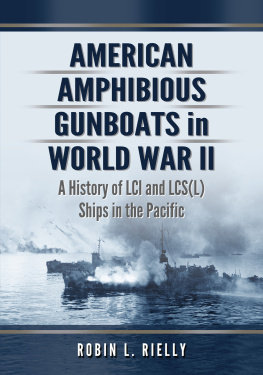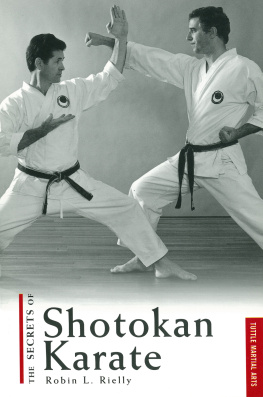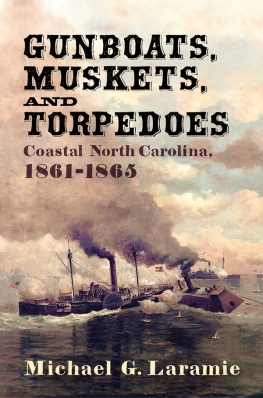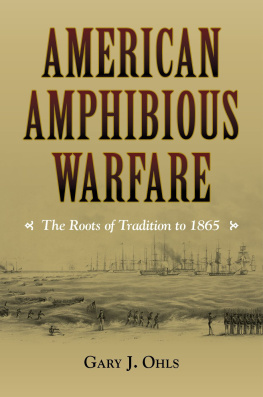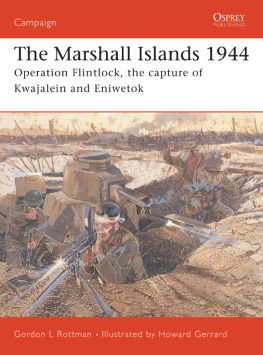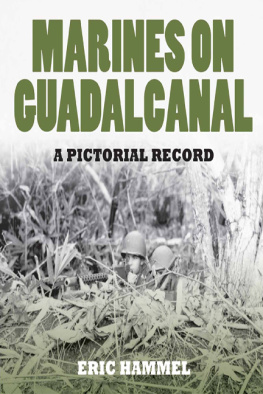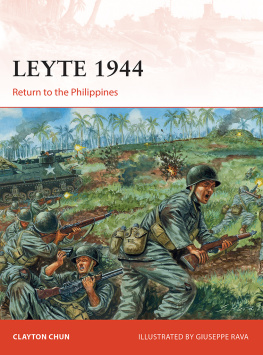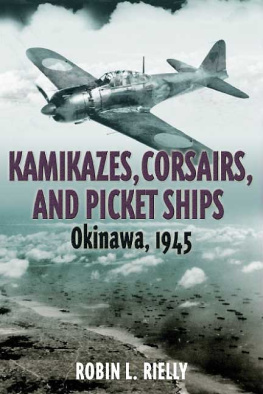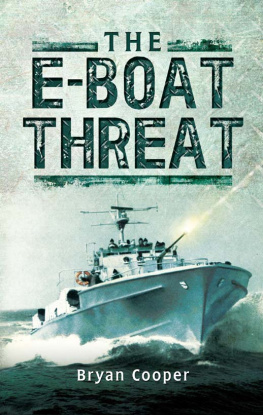
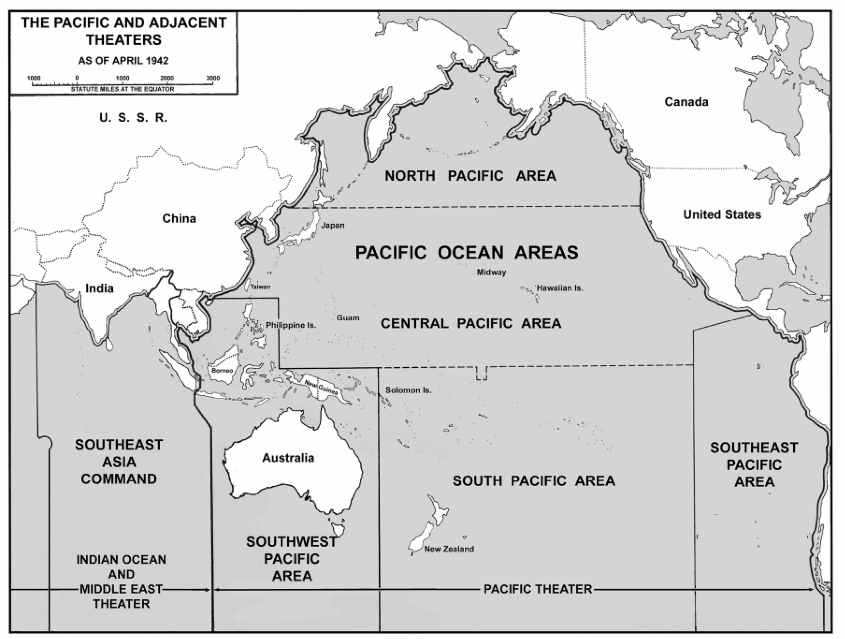
This map of the Pacic Theater and adjacent areas was adapted from map II in Louis MortonsStrategy and Command: The First Two Years(United States Army in World War IIseries) (Washington, D.C.: Ofce of the Chief of Military History, Department of the Army, 1989).
American Amphibious Gunboats in World War II
A History of LCI and LCS(L) Ships in the Pacic
ROBIN L. RIELLY

McFarland & Company, Inc., Publishers
Jefferson, North Carolina, and London
Also by Robin L. Rielly
and from Mcfarland
Kamikaze Attacks of World War II:
A Complete History of Japanese Suicide Strikes on American Ships, by Aircraft and Other Means (2010; paperback 2012)
LIBRARY OF CONGRESS CATALOGUING DATA ARE AVAILABLE
BRITISH LIBRARY CATALOGUING DATA ARE AVAILABLE
e-ISBN: 978-1-4766-0214-1
2013 Robin L. Rielly. All rights reserved
No part of this book may be reproduced or transmitted in any formor by any means, electronic or mechanical, including photocopyingor recording, or by any information storage and retrieval system,without permission in writing from the publisher.
Cover photo: A line of LCI(R)s fire rockets at Peleliu on 15 September 1944. The gunboat in the foreground is LCI(R) 77 (NARA 80G 59500)
McFarland & Company, Inc., Publishers
Box 611, Jefferson, North Carolina 28640
www.mcfarlandpub.com
For
Allison Shea Rielly
Preface
In the grand scale of the conict that was World War II, the student of history has much to ponder. Most often ones attention is drawn to the major battles and campaigns, centering on the well-known names of admirals and generals. As it concerns naval history, this broad view of major characters and events leaves out an important part of the war, that of the individual ship or unit. In like manner, the capital ships are the objects of much attention as the decisive players in an engagement. Left in the backwater of our memories are the countless thousands of smaller ships and lower ranked ofcers and men who made great sacrices and, in many cases, tipped the scales of the battle. This book details the exploits of a group of such naval combatants and their contributions in the Pacic Theater of the war. Collectively I have labeled these ships as the LCI gunboats which include the LCI(G)s, LCI(M)s, LCI(R)s, and LCS(L)s.
Many of these ships were converted in the war zone while others were converted soon after being completed at the builders yards. Identifying the ships with these designations can be problematic because there was often a delay in changing their ofcial designation from LCI(L) to a (G), (R), or (M) after conversion. In many cases this took several months, even though the physical changes and assignments of the ships had been effected. To avoid confusion, I have used the designations LCI(G), (R), and (M) from the time they were converted and put into use rather than when they ofcially received that designation.
Another problem with a work such as this is the concern with repetition. Numerous islands were invaded in the Pacic; many were minor adjuncts to major island assaults. In most cases the gunboats operated in a similar manner. They were in action a few days prior to the actual landing of troops, providing close-in re support for Navy Underwater Demolition Teams and Marine Reconnaissance units. In other cases they accompanied minesweepers, destroying mines cut loose by the ships and providing re support near shore. When the actual invasion took place, LCI(G)s, (R)s, and M(s), along with the newer LCS(L)s, made their initial runs just prior to the landing of troops and then remained close to the beaches, ring over the heads of troops as they landed. At that point they remained in the area ring on enemy targets identied by the men ashore and working in conjunction with spotter teams placed on board the gunboats. At night they provided harassing re. As the ghting moved away from the beach, the mortar gunboats with their longer range mortars laid down barrages on enemy positions that direct re 40mm and 20mm guns could not reach. Many of these were on the reverse slopes of hills and ridges. Toward the end of the war, a longer range rocket came into use and the LCI(R)s were used to great advantage. As the ghting progressed, the need for re support by the gunboats lessened and they spent much of their time making smoke screens to cover ships from aircraft attacks and salvaging equipment disabled near the beach. In island assault after assault the pattern was basically the same. Therefore, rather than providing an exhaustive list of actions similar in most ways, I have elected to cover those of major importance, as well as those that had unique aspects. While many ships performed courageous and notable tasks in the island invasions, I thought it best to leave out some of the actions to improve readability.
As a result, the story is not complete in that many events have been set aside to provide a better view of the big picture. This in no way denigrates the contributions of countless ships and brave crews, but there is a practical limit to how many can be listed. As a result, I believe that the text presents a signicant understanding of the ships involved in the actions of the Navys amphibious forces in the Pacic.
Ranks given are contemporaneous with the event under discussion. Thus Richmond Kelly Turner is described as a Rear Admiral during the invasion of Kwajalein Atoll and, in later events, is described as a Vice Admiral, as those ranks were held at the time the action took place.
Finally, it should be noted that all works must have their limits. The subject of this book is amphibious gunboats that were based on the LCI(L) hull. This included the LCI(G), LCI(R), LCI(M), and the LCS(L). On many missions involving covering the Underwater Demolition Teams (UDT) or in beach assaults, other ships such as the PGMs, PCs, LCS(S)s and others were involved in the battle as well. Barge interdiction usually involved the amphibious gunboats working in conjunction with PT boats. The gunboats were not in the war alone; they were an integral part of a eet from the largest to the smallest and they played an important role.
This book might give the impression that the LCI gunboats won the war but they had much assistance. However, to write a book covering each and every type of vessel found in the assault or in any of the other duties to which the gunboats were assigned would take many volumes. Accordingly, I have had to limit my work to those four types. Most certainly other ships are mentioned, but the focus in this book is on the LCI gunboats.
The primary documents used in this work show a variety of style. Gunboats may be described as USS or U.S.S. In cases where I cite specic reports, I have not modied them to make them consistent but have placed them in notes exactly as they were written. It should be noted that plurals of the ships at that time were usually written using an apostrophe s, which in todays grammar indicates the possessive. I have also kept these as they were in the original source wherever I have quoted from it. Therefore it is not uncommon to see references in the quoted material to LCI(G)s
Next page
